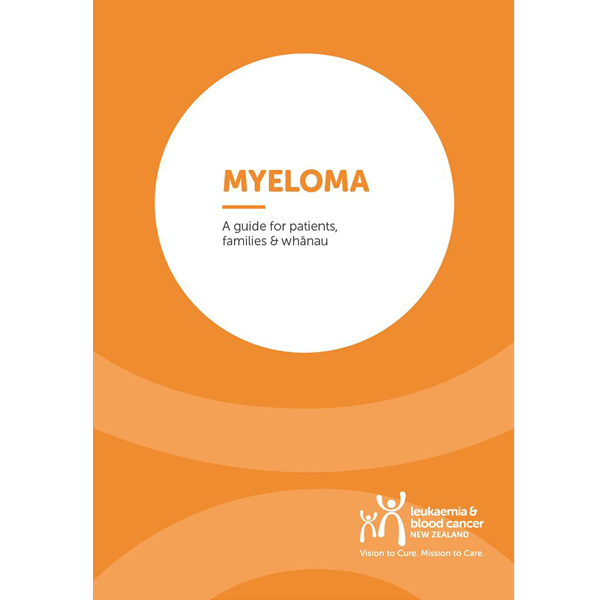

Myeloma, also known as multiple myeloma or plasma cell myeloma, is a cancer of plasma cells (mature B-lymphocytes) that usually arises in the bone marrow.
Myeloma develops when plasma cells undergo a malignant (cancerous) change and become myeloma cells. These myeloma cells multiply without any proper order, forming collections known as tumours that accumulate in different parts of the body, most commonly in the bone marrow and on the surfaces of different bones in the body.
Myeloma cells secrete chemicals that stimulate other bone marrow cells (osteoclasts) to remove calcium from the bone. As a result bones can become weaker, more brittle and break more easily.
Under normal conditions, plasma cells produce immunoglobulins (antibodies) that help protect the body from infection and disease. Myeloma cells produce an abnormal type of immunoglobulin called a paraprotein (also known as monoclonal immunoglobulin, myeloma protein, or simply M protein). This can be detected in the blood.
As myeloma cells multiply, they crowd the bone marrow and prevent it from making normal numbers of red cells, white cells and platelets. Myeloma cells can also interfere with the production of normal antibodies.
This can make people with myeloma anaemic, more susceptible to infections and to bleeding and bruising more easily. Excess immunoglobulin fragments can also cause damage to the kidneys.
The myeloma type is described by which type of excess immunoglobulin is produced. Each immunoglobulin is made up of a combination of two ‘heavy’ chains and two ‘light’ chains. If excess heavy chains are produced it is termed heavy chain myeloma, and if excess light chains are produced it is called light chain myeloma.
Myeloma is classified according to how the disease has affected the plasma cells in the bone marrow and blood. In the majority of cases myeloma is found in multiple bone marrow sites at diagnosis, which is why the disease is sometimes called multiple myeloma. Myeloma can also be classified according to the type of immunoglobulin being secreted by the myeloma cells, and how it affects the body.
The symptoms of myeloma depend on how advanced the disease is. In the earliest stages there may be no symptoms and myeloma may be detected by coincidence during a routine blood test.
Common symptoms include:
The exact cause of myeloma remains unknown. However certain factors that may put some people at a higher risk of developing myeloma include exposure to higher doses of radiation and ongoing exposure to certain industrial or environmental chemicals. However, the exact cause or cases of myeloma remain unknown.
Treatment for myeloma may involve one or a combination of the following:
